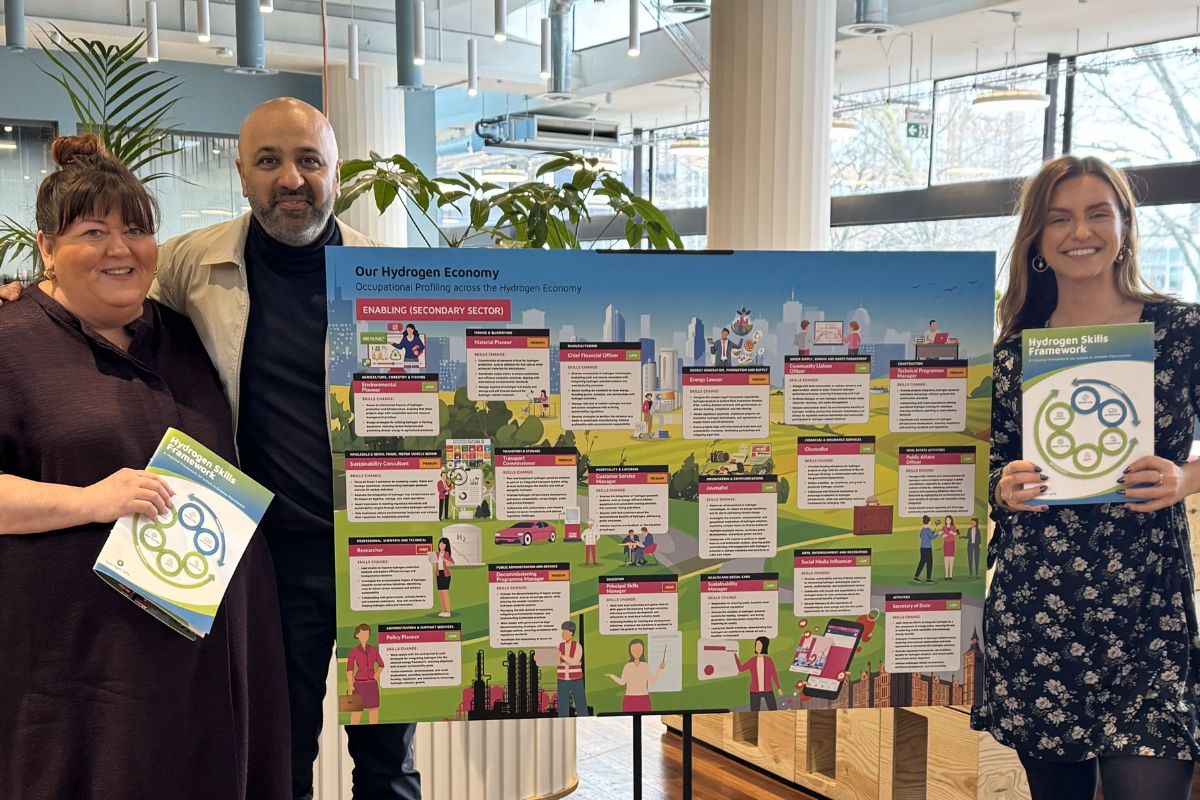The Place of Human Skills at the AI Table

AI has taken the labour market by storm and with that comes new occupation and skills needs. This article offers some valuable data on skills requested for AI occupations, and guides educators through how they can best prepare their learners to fulfil new AI roles and skills requirements.
From automating routine tasks to facilitating complex decision-making processes, the power of AI is unbeatable and unquestionable. In a market where everything needs to be delivered yesterday, the wide adoption of AI is far from surprising. But while AI may have the answer to a lot of our most pressing questions, a huge question remains to be answered: what human skills will be needed in the future?
Learning to live in an AI-powered world requires businesses to rethink what skills they need from employers to meet their goals. But we may not need a 180-degree transformation: a lot of the skills already being requested in job postings will not only remain relevant but be increasingly more sought-after.
AI in education: Where do we start?
Education providers have the challenging task of bridging the gap between employers’ needs (old and new) and the skills workers possess, helping to build the foundation for great talent and growth. However, adapting a curriculum to new AI skills needs and other complimentary needs that stem from AI adoption can’t be based on guesswork. Conversations need to be had around preparing education for an AI world, and institutions need the data to drive them in the right direction.
The Lightcast team recently attended the FE Collective conference in Birmingham, where I presented a session about the latest trends in AI skills and jobs. Understanding digital skills trends is the first step for educators to adapt their curriculum and processes – and make sure their students’ skill sets stay relevant for years to come. We’ve gathered some of the AI skills data presented at the FE Collective in this blog.
Reaping the AI opportunity
AI truly presents businesses and employees with a new panoply of opportunities – and there’s data to back this up. The Lightcast team has been heavily researching AI trends in the workforce, including occupations, skills, and recruitment figures. Our data tells us that AI jobs are generally well-paid and high-value. For instance, the median advertised salary in a job posting for Finance Managers mentioning AI skills is £13,000 higher than the median advertised salary offered for the same position but without any AI skills. Even within the same roles and occupations, AI can boost annual wages significantly.
So we know there’s an opportunity – now, how do education providers help learners to reap it? There’s a wide variety of sought-after AI skills to consider for AI roles: machine learning was the most popular in 2021 and continues to grow in demand. Others include Natural Language Processing (NLP), Deep Learning, Computer Vision, and TensorFlow. More tech-based occupations and roles tend to request these highly specialised skills, so it’s worth taking these into account for technology courses.
What about human skills?
Even jobs that are heavily connected with the use of AI don’t just require AI skills, but also include a variety of other technical and common or “human” skills. It’s therefore really important to equip students with these skills as well. Some of the most in-demand technical skills for AI jobs include Python, data science, SQL, software development, and software engineering. The most sought-after common skills for AI roles are also highly popular across various different roles and include communication, teamwork, research, problem-solving, and creativity.
What we can quickly learn from the data is that human skills are just as important in AI-powered workforces as they were before the AI era. Skills like communication and teamwork can’t be acquired by AI tools – and that’s where workers can stand out. In order to adapt your curriculum to new needs and make it as future-proof as possible, you need to dive deeper into this data.
With Lightcast data, educational institutions can see exactly what kind of AI roles their local employers are advertising for, the skills they need, and the prevalence of AI across different regions. Then, it’s a mapping exercise: reviewing every course to ensure that it covers employer needs and ensuring that your portfolio prepares students for emerging roles too. The future of AI is already here – get in touch with Lightcast to access data and understand AI trends in your region.
By Elena Magrini, the Head of Global Research at Lightcast.
FE News on the go…
Welcome to FE News on the go, the podcast that delivers exclusive articles from the world of further education straight to your ears.
We are experimenting with Artificial Intelligence to make our exclusive articles even more accessible while also automating the process for our team of project managers.
In each episode, our thought leaders and sector influencers will delve into the most pressing issues facing the FE sector, offering their insights and analysis on the latest news, trends, and developments.











Responses